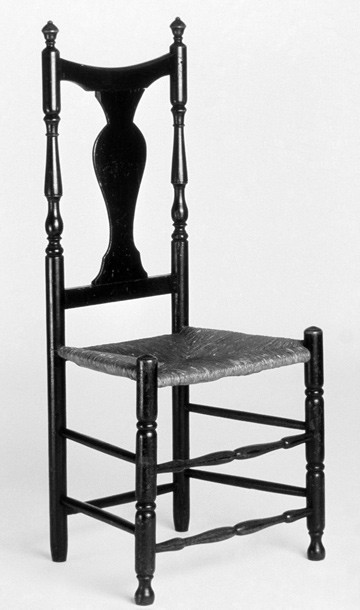
Side chair possibly by John Durand (1735–1780), Samuel Durand I (1738–1829), or Samuel Durand Jr. (1762–1838), probably Milford, Connecticut, 1760–1790. Maple and hickory; rush. H. 41 3/4", W. 19 1/8", D. 14 1/4". (Courtesy, Winterthur Museum.)
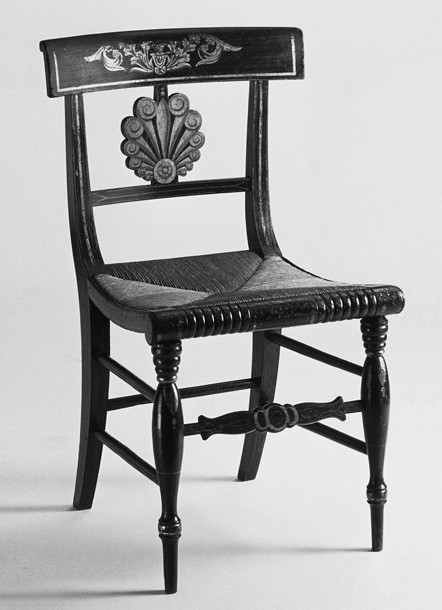
Side chair, Baltimore, Maryland, 1820–1830. Maple and yellow poplar; rush. H. 32 3/4", W. 17 1/2", D. 15 1/2". (Private collection; photo, Winterthur Museum.)

Armchairs, Philadelphia, Pennsylvania, 1730–1750. Walnut. H. 41 1/4", W. 32 3/4", D. 21" (chair facing forward). (Courtesy, Winterthur Museum.)
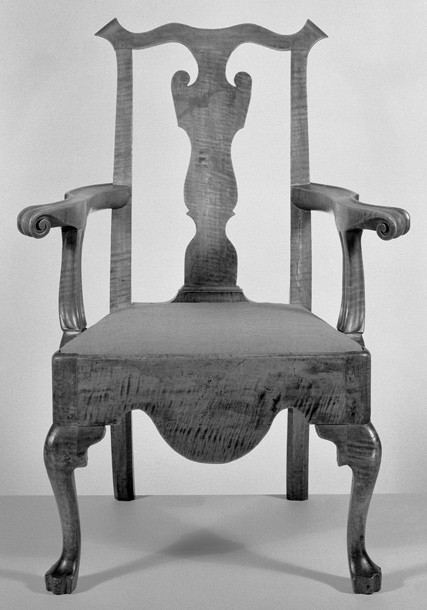
Armchair, Philadelphia, Pennsylvania, 1745–1755. Maple with pine. H. 41 3/8", W. 29 7/8", D. 23 3/8". (Courtesy, Winterthur Museum.)
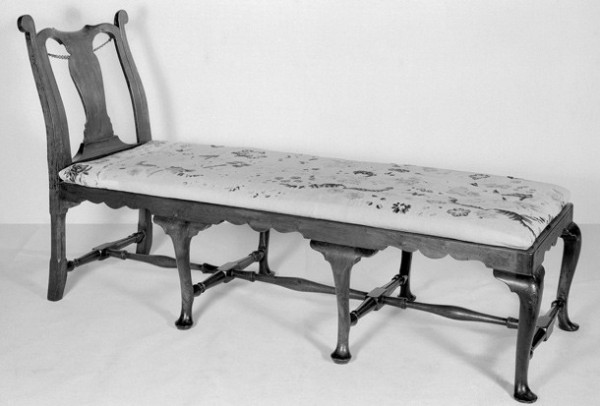
Couch, Massachusetts or Rhode Island, 1730–1760. Walnut and maple. H. 38", W. 23 3/4", L. 68". (Courtesy, Winterthur Museum.)

Child’s armchair, New England, 1750–1800. Red oak and maple. H. 26", W. 15 1/4", D. 10 3/4". (Courtesy, Winterthur Museum.)

Cradle, Pennsylvania or New Jersey, 1740–1800. Walnut and yellow poplar. H. 28 1/2", W. 24 3/8", L. 42". (Courtesy, Winterthur Museum.)
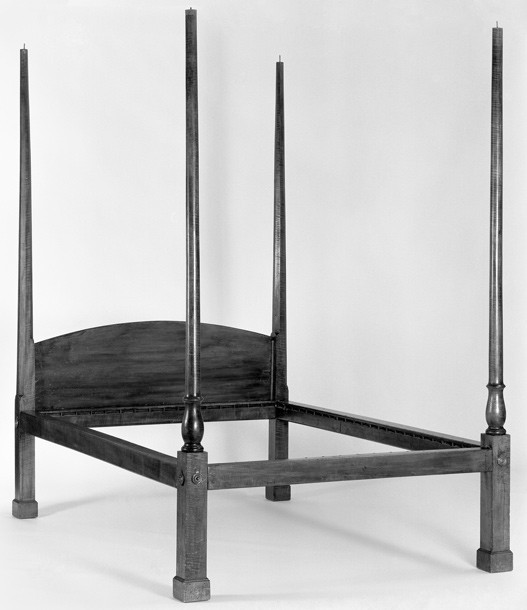
Bedstead, North Shore, Massachusetts, or Portsmouth, New Hampshire, 1770–1810. Maple and white pine. H. 88 3/4", W. 58", L. 80 3/4". (Courtesy, Winterthur Museum.)
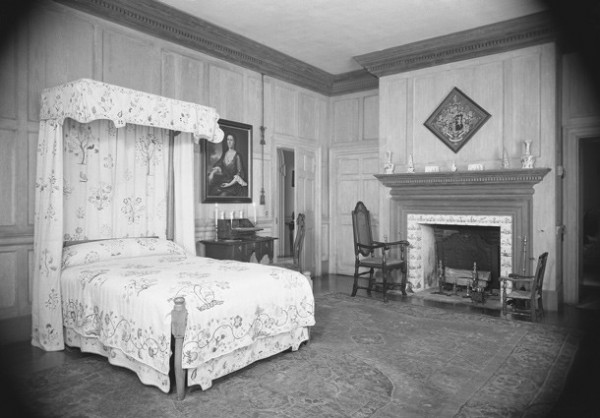
Bedstead, New England, 1780–1830. Maple and ash. H. 85 3/4", W. 52 1/2", L. 73 5/8". (Courtesy, Winterthur Museum.)
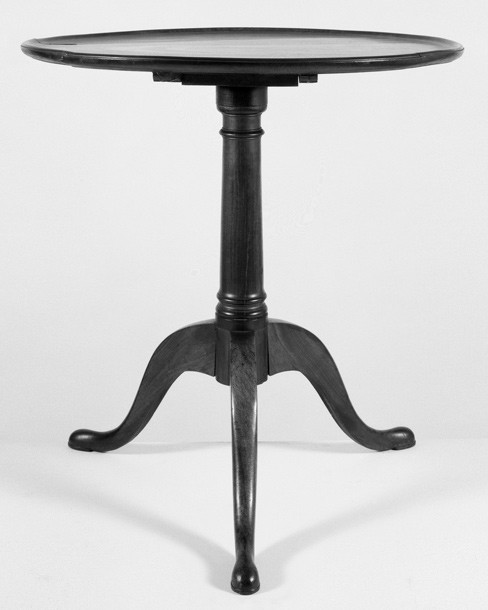
Nathaniel Dominy V (1770–1852), tea table, East Hampton, Long Island, New York, 1796. Mahogany. H. 27 3/8", Diam. (top) 26 5/8". (Courtesy, Winterthur Museum.)

End section of dining table, probably Baltimore, Maryland, 1790–1800. Mahogany, mahogany veneer, and cedrella with white oak. H. 28 3/4", W. 51 3/8", L. 43 5/8". (Courtesy, Winterthur Museum.)
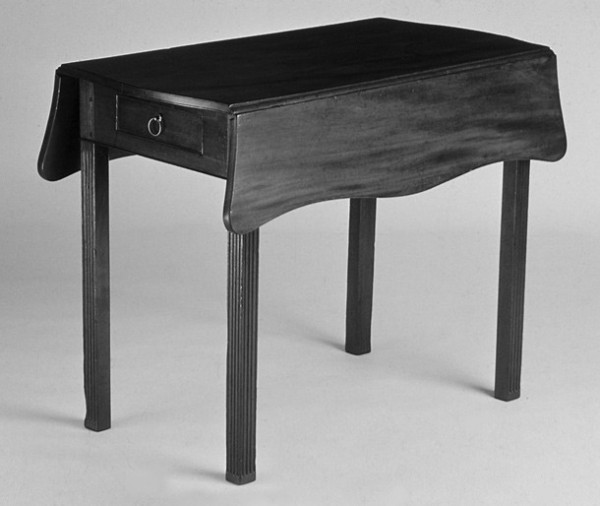
Elijah (1752–1825) and Jacob (1758–1810) Sanderson, breakfast, or Pembroke, table, Salem, Massachusetts, 1779–1800. Mahogany with white pine. H. 27 1/2", W. 34", L. (open) 34 7/8". (Courtesy, Winterthur Museum.)
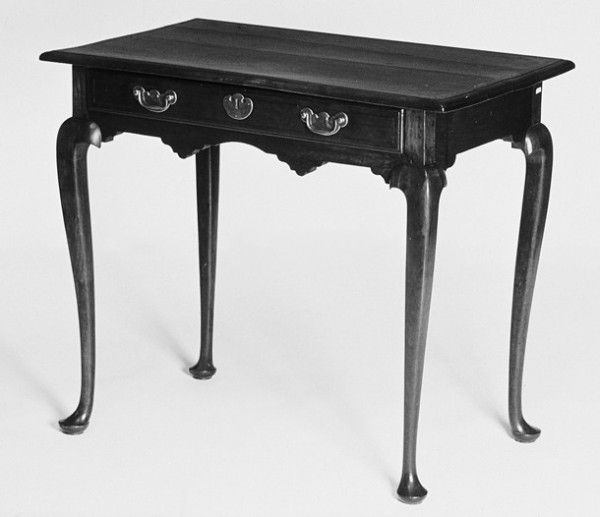
Dressing table, northeastern Massachusetts, 1730–1750. Black walnut with birch and white pine. H. 29", W. 33", D. 20 1/2". (Courtesy, Winterthur Museum.)
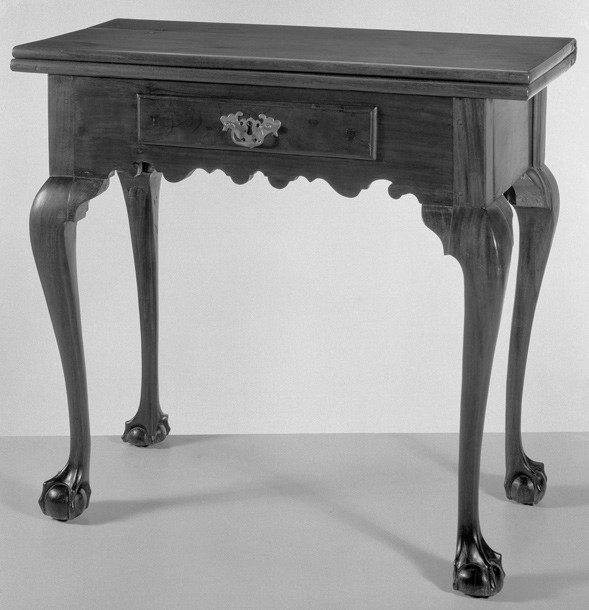
Card table, Philadelphia, Pennsylvania, 1750–1775. Walnut with yellow pine. H. 28 3/8", W. 31 7/8", D. (open) 31 3/8". (Courtesy, Winterthur Museum.)
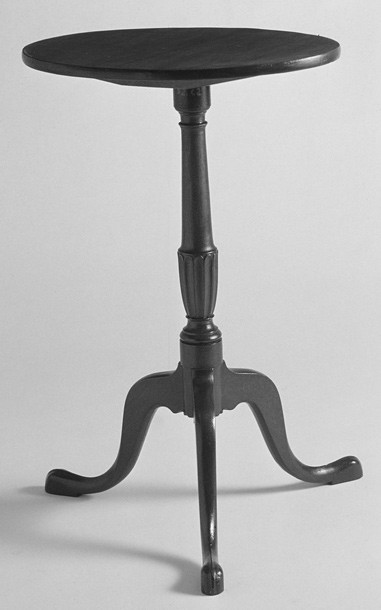
Joseph Short (1771–1819), candlestand, Newburyport, Massachusetts, 1795–1805. Mahogany. H. 26 5/8", W. (top) 13 5/8", L. (top) 18 1/2". (Courtesy, Winterthur Museum.)
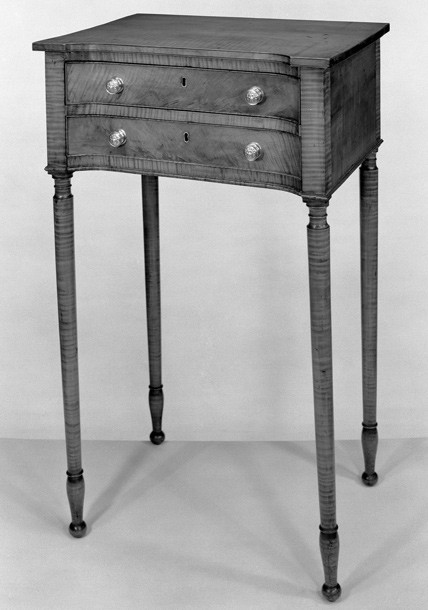
Worktable or -stand, New York, 1800–1810. Curled maple and curled maple veneer with yellow poplar. H. 32", W. 19 1/8", D. 15". (Courtesy, Winterthur Museum.)
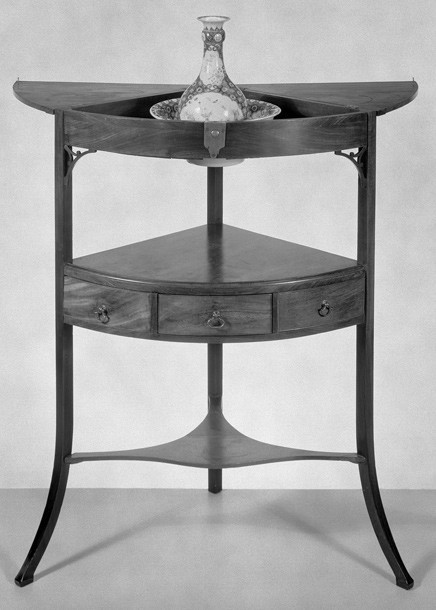
Jacob Forster (1764–1838), corner wash, or basin, stand, Charlestown, Massachusetts, 1790–1800. Mahogany with white pine. H. 34", W. 29 1/4", D. 16 1/4". (Courtesy, Winterthur Museum.)
